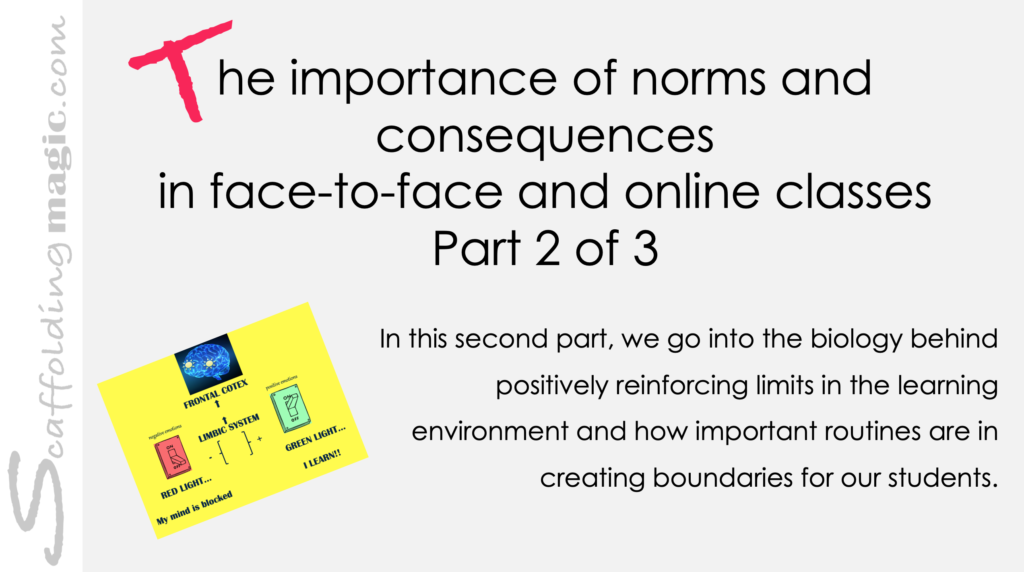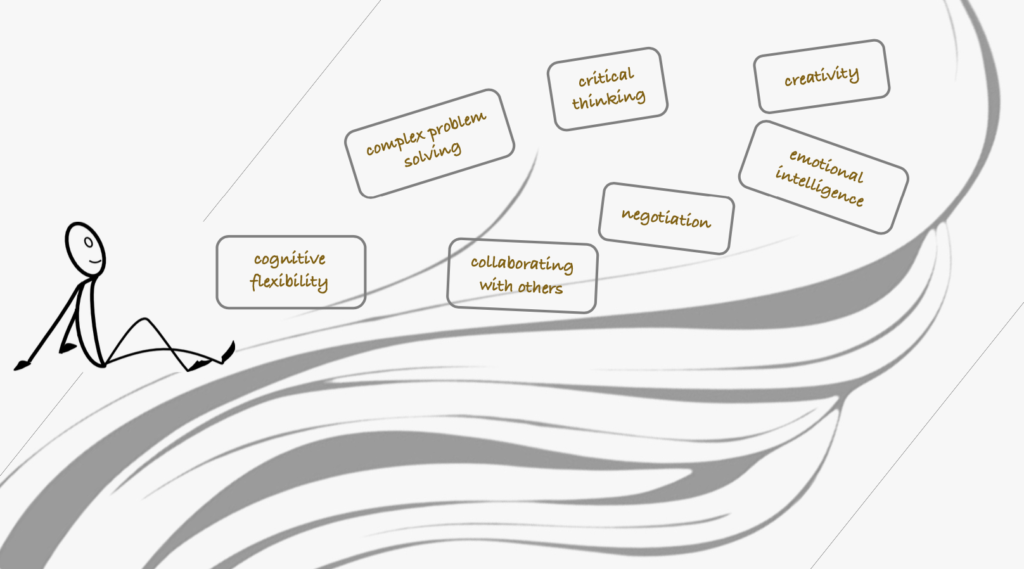
Download PDF of blog here.
How do routines promote a safe learning environment?
In Part 1 of 3, we discussed the importance of norms and consequences and how they promote a safe learning environment. When students are allowed to be involved in the process of creating key elements within the classroom, they become, amongst many other factors, more engaged, have a sense of responsibility for their own contributions to reaching (or not) daily goals, and become more aware of their influence in negative or positive outcomes depending on the choices they make. We continue Part 2 of 3 with a closer look at the benefits of routines in our practices.

Research shows that academic success depends on the development of self-regulation, emotional awareness and the ability to get along and work with others. Teaching these complex skills is a part of the positive discipline.
Jane Nelsen, Positive Discipline
Routines are procedures we establish in our classroom because they create rhythm, they create patterns, they serve as specific actions that everyone is familiar with at concrete times and circumstances and so give learners a feeling of security within the general chaos of their daily lives. We use routines not to dominate our time with our students, but rather to optimise the time we have with them. Procedures are strategic measures that help us to maneuver over the inevitable physical and emotional hurdles that are part of a vibrant space shared by diverse beings.
When they are clearly outlined, modelled and followed by all the members of the class, routines serve as benchmarks for students – guidelines that they learn to depend on and trust; in this way, their minds are more open to learning. Routines, in essence, create a strong affective domain without which, learning is blocked.
The biology behind the efficacy of routines
We can show this dynamic biologically, through studies of the brain. Without delving too deeply into the science, there are simple factors that lead experts to affirm the direct link between emotions and learning. Are you ready for a little biology? Don’t worry – this will be fun…and enlightening!
Below you see two visual interpretations, followed by a linguistic explanation, of how information enters the brain. Which one makes more sense to you? Which visual could you use to help your students understand the dynamic?


Linguistic explanation…
- Information enters the brain through the brainstem.
- From the brainstem, information goes to the limbic system (also called the ’emotional center’).
- From the limbic system, information proceeds to the frontal cortex.
- From the frontal cortex, it is possible that the information goes to the back of the brain, where it makes more long-term connections.
- WARNING: If the limbic system registers a negative environment from its external environment (yelling from the teacher, mistreatment from classmates, lack of food, cold, etc.) the brain becomes blocked, and the information does not reach the frontal cortex.
- If the limbic system registers a positive environment from their external environment (a show of affection from the teacher, generosity from peers, a sense of physical safety, etc.) it allows information
No matter which explanation you like more, the conclusion we can all reach is that a strong affective domain is essential if we want a fluid learning environment for our students. One of the ways of strengthening the emotional centre is to co-create routines with our students that address key interactions in the classroom.
Why ‘co-create’, you may ask. ‘I’m the teacher and what I say goes.’ In the teacher-centred model, you are absolutely correct. However, if you are focusing on controlling the external behaviour, you are losing the opportunity for your students to monitor their own behaviour. Positive reinforcement techniques honour the whole child.
A child’s individual development is critical during the student years. If their emotional and physical needs are met, they become more empathetic and contributive citizens of the world.
What you can do to begin strengthening the affective domain and creating a safe learning environment in your classroom, is plan routines with the following three tips:
- Get your students involved in the creation of the norms and consequences, and any other decisions that they could appropriately negotiate as a class.
- Create a respectful relationship with your students by being respectful of them.
- Use a sense of humour whenever possible. (When we can step back and put things into perspective, things are always lighter and easier. Our job is to facilitate the development of the whole child. Their job is to challenge us at every juncture! If they push you, they’re doing their job. You can just smile, praise their initiative, and guide them towards rebelling respectfully!)
We use routines not to dominate our time with our students, but rather to optimize our time with them.
In Part 3 of 3 of the ‘The Importance of Routines…’, we will address online dynamics and specific techniques we can implement to create fluid digital classes.
* According to the most recent OECD report on the results of the Global Competences questionnaire, those students who have the support of their peers, score 50 points higher on PISA exams in reading than those who don’t. While exams per se are not our goals, the OECD conclusions are important as they have to do with the development of the child as a whole. Those students who can count on the collaboration of their peers in school, are more likely studying in learning environments with stronger affect domains, and so have an easier time assimilating new information. This, ultimately, has positive personal, academic and (future) professional consequences.
Resources
- CLIL Training Guide: Creating a CLIL Learning Community in Higher Education
- Daily routines
- The importance of routine in education
- 32 Classroom Routines every teacher needs
- Hattie, John Visible Learning
- Positive Discipline, Jane Nelsen
- scaffoldingmagic.com A website dedicated to providing dynamic and innovative activities that will help student to transition into new information.
- The Comprehensive Guide to Creating Phenomenon-Based Learning Projects The steps to create multi-cultural, interdisciplinary and collaborative projects.
- The First Day of School, Wong, Harry
- Teacher Training Videos Videos that teach how to use the most useful educational

Scaffoldingmagic.com is your entryway into DYNAMIC bilingual learning methodologies, such as Phenomenon-Based Learning, CLIL, EMI, and ESL. You’ll find ways to implement critical thinking tools (DOK) to promote higher level thinking, the growth mindset, instill an ethic of excellence, deep reflection on learning, and all through multi-cultural, interdisciplinary activities. We have the keys to turning competences into action and to creating collective efficacy in your school so you move ahead as a unified, enthusiastic team.
Pingback: The Importance of Routines, Norms and Consequences in Face-to-Face and Online Classes (Part 3 of 3) - Scaffolding Magic